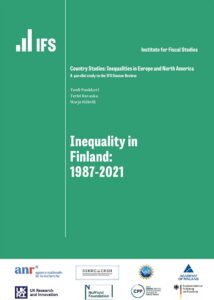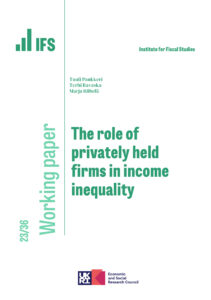The Finnish study, led by Tuuli Paukkeri, provides a rich understanding of inequalities in Finland in recent decades, with data harmonised across 17 high-income countries.
Questions that this work sheds light on include: How have labour market and income inequalities changed in recent decades, and how do they differ between people with different levels of education, between men and women? Which inequalities have increased and which have declined? How are they related to changes in labour market institutions, taxes and state transfers, and social changes? Answering these questions comprehensively requires a cross-national perspective, examining trends not only in one country, but documenting the experience of a range of different countries.
The report “Inequality in Finland: 1987 – 2021” analyses economic inequalities in coherent framework, which can be easily compared to, and read alongside, other similar report produced for other countries in this project.
In addition, the Finnish team have published a working paper as part of this project which consider the role of privately held firms in understanding income inequality in Finland.
The report
Inequality in Finland: 1987-2021 by Tuuli Paukkeri, Terhi Ravaska and Marja Riihelä
The working paper
The role of privately held firms in income inequality by Tuuli Paukkeri, Terhi Ravaska andMarja Riihelä

